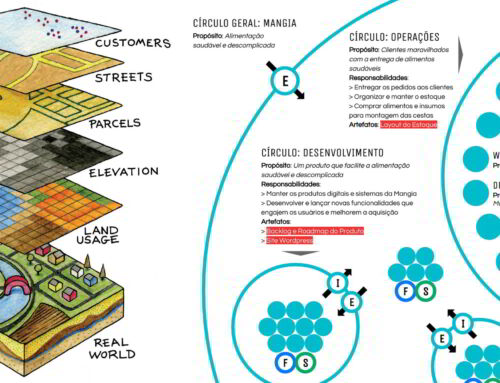We see many posts differentiating a leader from a boss. Both occupy a position of command within a company, but the boss is that inhuman, authoritarian, selfish person who needs to be reasserted. The leader, on the other hand, seeks to listen to and involve his subordinates, is inspirational, cares about the sustainability of work and the well-being of people. If you have to choose between the two, surely you’d better be a leader than a boss. But we can also go a step further by questioning the existence of the superior-subordinate relationship. Why does the boss exist? Are there companies without bosses?
What is a boss?
By definition, the boss is someone who has more authority than you. It is above you in the organization chart and can theoretically override any decision you have made. The duties of the chief usually include approval, hiring, firing, evaluation, promotion, training and supervision.
If we revisit Frederick Taylor’s work of 1911 (yes, over a century ago), we will see that the chief still follows the principles of scientific management (free translation from Portuguese):
It would the responsibility of management to post workers in a supervised working day, without interruptions, to their (management) control, the worker being able to stop to rest only when it is allowed, with particularization of each movement
[..]Management could not leave control of the work process in the hands of the workers […]
You, as your boss’s subordinate, will inevitably fear displeasing you for a clear reason: self-preservation. If your boss is the only person who can determine your success or failure in the organization, how could it be different? The reality is that however egalitarian and good your boss or leader is, the power is his. Sounds wicked, right?
Why does the boss exist?
If you have read the about The 5 Organizational Development Stages, you should remember that the hierarchical pyramid was an invention of conformist organizations (amber). At its origin, the main purpose of this mechanism was to generate stability, to allow long-term planning and to establish a control relationship from the top to the bottom. A basic assumption of this model was that people did not want to work and needed to be supervised.
In the past, employees were hired to perform a pre-specified function with clear instructions. Innovation was not a priority. We know that today the reality is different. The work of 21st century organizations is predominantly creative and collaborative, a context in which building healthy relationships is critical. Abuse of power and competition for the higher ranks of the hierarchy do not favor this condition. If the superior-subordinate relationship is not desirable in the organizations of the future, can we eliminate it?
Can we do away with the hierarchy and the bosses?
Yes, we can. Some companies have already changed. However, ending the with bosses does not mean that the roles he normally performs will be abandoned. We need other mechanisms that exercise the functions of approving, hiring, dismissing, evaluating, promoting, training and supervising. Ok, except the last one :).
Companies without bosses
Morning Star (USA): Food processor responsible for 40% of the country’s tomato sauce, without heads or managers. As they enter the organization, employees create a multi-peer letter (The Colleague Letter of Understanding), listing their responsibilities, roles, and how they can better help the company. When someone wants to buy a new machine, it is not necessary to ask permission from the “leader”. Instead, potential purchases are discussed and agreed upon among peers impacted by the decision, which is called the counseling process. Yes, self-management can even work on the factory floor.
Vagas.com (Brasil): There are no hierarchies or bosses that concentrate the power in Vagas.com. Whenever a member of the organization needs to make an important decision, it involves all the colleagues it deems necessary to seek “consent.” Not all decisions are made this way: the simplest are taken in an autocratic way by colleagues, because they “presume consensus”. If you disagree with a decision made, you can open a “controversy” and re-discuss it.
Systems that replace bosses
In the book Reinventing Organizations, Frederic Laloux describes several practices of evolutionary organizations (teal) that are used to establish self-management, evolutionary purpose, and wholeness. Among these practices is the counseling process used by Morning Star, which replaces the approval function of a conventional boss. There are other mechanisms that replace the other functions, making this role unnecessary.
A complete system that you can adopt to bring self-organization and eliminate the relationship between bosses and subordinates in your organization is Holacracy. This organizational governance framework replaces the hierarchical pyramid with a set of self-organized circles, divided in roles. The biggest company that adopted the model so far was Zappos (2013), an American online shoe store that has more than 1700 employees. Holacracy does not define a standard mechanism for hiring, firing or evaluating. However, it is common for these roles to be performed by processes distributed across multiple roles and people, preventing a critical decision such as dismissal from being the result of the will of only one individual.
The superior-subordinate relationship is no longer necessary for an organization to succeed. On the contrary: it can be harmful because it weakens relations and gives space for abuse of power. In addition, there are alternative systems that replace the functions of a traditional boss. Many organizations are already changing. Yours is? How do the evaluation, hiring, firing and promotion processes in your company work? Are these decisions exclusive to bosses? Comment below :)






[…] “The end of bosses: why some companies are getting rid of them”, we talked about the inability to adapt the chain of command, the predominant organizational […]
[…] “The end of bosses: why some companies are getting rid of them”, we talked about the inability to adapt the chain of command, the predominant organizational […]
[…] “The end of bosses: why some companies are getting rid of them”, we mentioned that some organizations are leaving the hierarchical structure behind and going […]
The article analyzes the communication problem between technical staff and management very well. Introducing the concept of the time value of money is practical and very inspiring for solving communication problems!